Table of Contents
Setting up a marine aquarium – Introduction
Setting up a marine aquarium requires knowledge of a list of things needed to start, which you will find in this article. Moreover, setting up a marine aquarium will also be facilitated by links to articles that will help you acquire the knowledge necessary to understand all aspects of building a marine aquarium.
Aquarium
An aquarium, most often made of glass – there are many ready-made kits available on the market, but you can also commission a custom-made aquarium from a company specializing in marine aquaristics in your area.
In marine aquaristics, there are no limits when it comes to the size of the tank. There are really huge aquariums, holding several thousand liters, but there are also aquarists who successfully manage aquariums with a capacity of 60 liters. However, it’s worth noting that larger tanks are easier to maintain than smaller ones. The main role here is played by the stability of the environment in the aquarium, and more water means greater stabilization.
Here you will find information on how large an aquarium you should choose.
In another article, I described what kind of aquarium to choose: with a sump (with a chimney), with a panel, or maybe with a filter. If with a chimney and sump, then what type of chimney to decide on: internal or external? You will find the answers to these questions here.
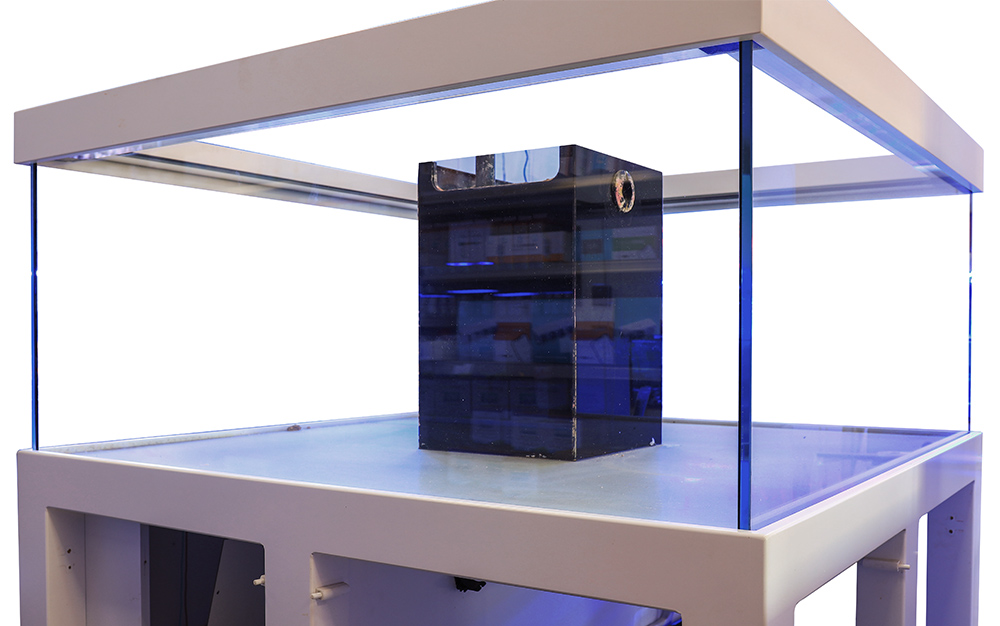
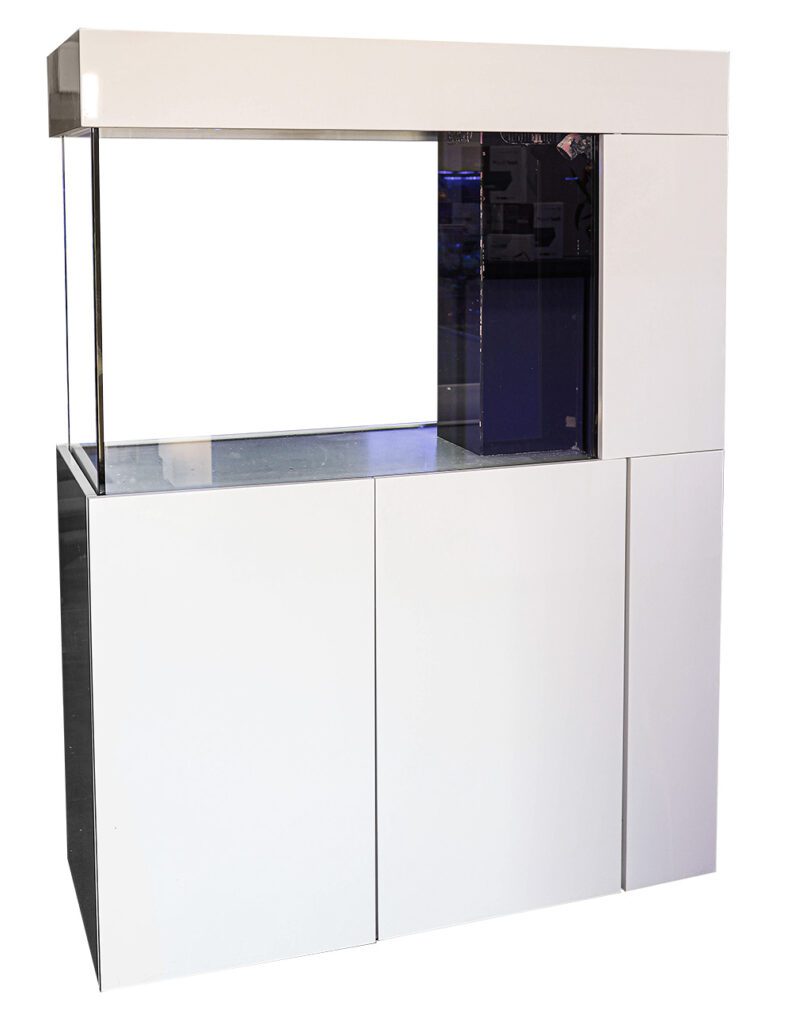
Setting up a marine aquarium: cabinet and stand
On the market, we usually find small aquariums that are placed directly on the cabinet or larger aquariums, intended for cabinets with a frame.
Marine aquarium frames are made of steel, stainless steel and aluminum. They can be welded or made of special bolted systems.
If we are building a tank for the first time, it’s good to ask for help from specialists who build tanks professionally. There are many dependencies that should be taken into account when building an aquarium frame. These are: the weight of the aquarium, the height of the cabinet, the fixing of the cabinet system, etc.
When choosing a ready-made aquarium system, we do not have this problem and we rely on the manufacturer’s experience.

Setting up a marine aquarium – is a sump necessary?
It’s worth remembering that there are types of aquariums with panels or external filters, so not every marine aquarium will consist of a sump, although this is the most common option.
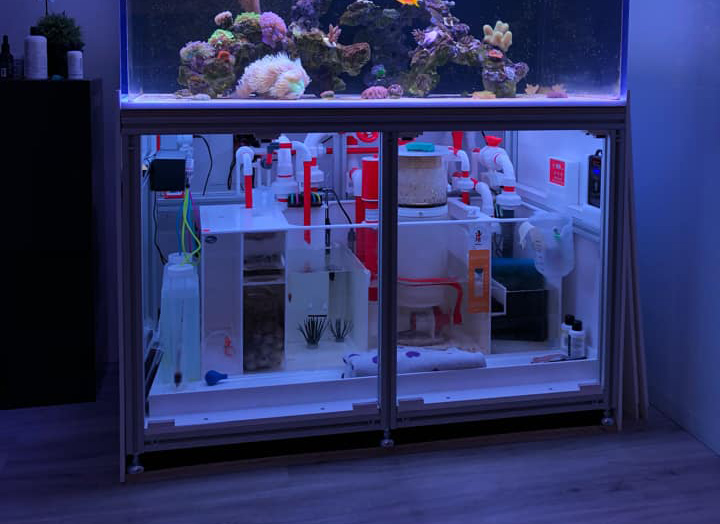
Hydraulics in the process of setting up a marine aquarium
If we choose the option of an aquarium with a sump, we need to connect these two elements using hydraulics, creating the right water cycle. On the one hand, we will connect the circulation pump with the aquarium, and on the other – the chimney with the sump. This way water circulation in our aquarium is created.
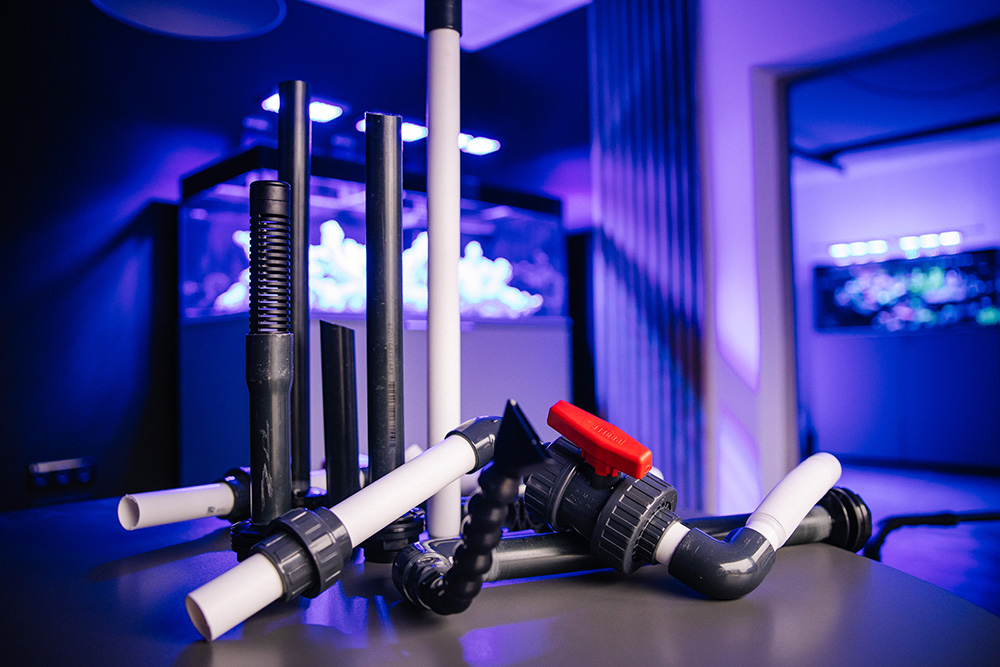
Lighting and setting up a marine aquarium
Firstly, I want to highlight the fact that the topic is very extensive, so in this article I will only briefly describe what to pay attention to when it comes to lights.
I took part in the construction of 3 models of LED lights, one of which is considered the most effective light on the market in its category. That’s why the topic of lighting is particularly close to me.
It is worth choosing LED lamps that are now widely available on the market. In the past, aquarists used HQI lights as well as those based on T5 fluorescent tubes. Due to electricity prices, I would definitely choose economical and effective lighting.
What we pay attention to when buying is light coverage – PAR power vs electricity consumption.
To see what coverage the selected light will give us, check the product specifications.
A modern LED light will successfully illuminate the entire interior of the aquarium. However, the differences in the brightness between different devices are huge.
Be sure to pay attention to the issue of burning lenses by UV diodes. It’s worth checking whether the manufacturer of the lights, you want to equip the tank with, has solved this problem. There are numerous LED lights on the market that burn lenses. So it makes sense to check whether you are investing in lighting that will not let you down. I’ve seen many types of lights, even from top manufacturers, and it was enough to look at the right angle to notice that the lens is simply burnt. The light from a blown lens is useless.
Also, pay attention to what the manufacturer’s approach to warranty is. Your aquarium won’t last very long without light.
Setting up a marine aquarium: which return pump to choose
The return pump is used to create a water circulation in the aquarium. It is assumed that the pump power should be 10 times greater than the circuit. Which means that if we have 600L in circulation, then our pump should have 6000L/h of power.
A hint that I can give you here is to check what power the pump has at the height of its inlet to the aquarium. If at a height of 2m your pump pumps water at a speed of 6000L/h, and you have an aquarium with a capacity of 600L, it means that you have correctly selected the power of the pump for your set up.
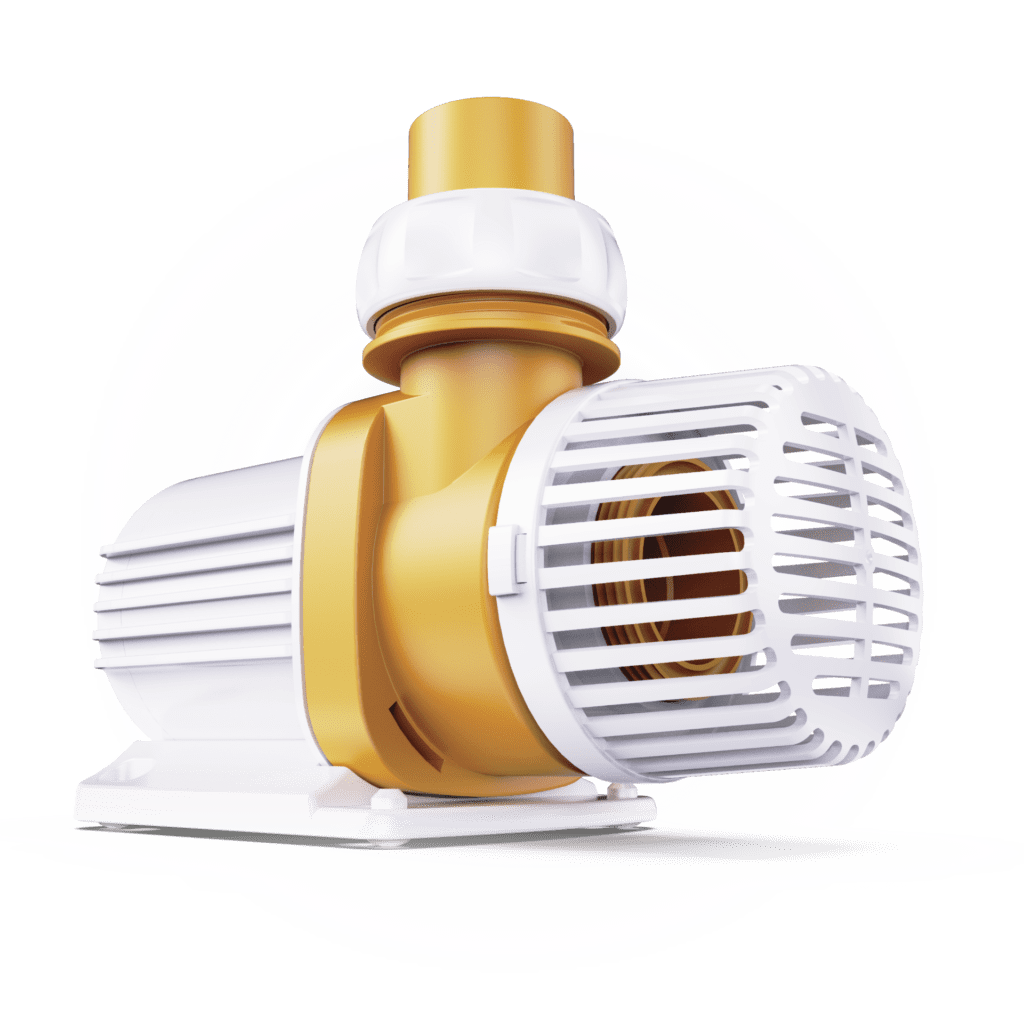
Setting up an aquarium – how to choose a protein skimmer
A protein skimmer removes unnecessary organic matter from the water (proteins and other dirt), and its efficiency should be appropriately matched to the size of the aquarium. Importantly, one of the common mistakes is that in aquariums with Acroporas, skimmers that are too large are often installed. Here you will find more information about skimmers.
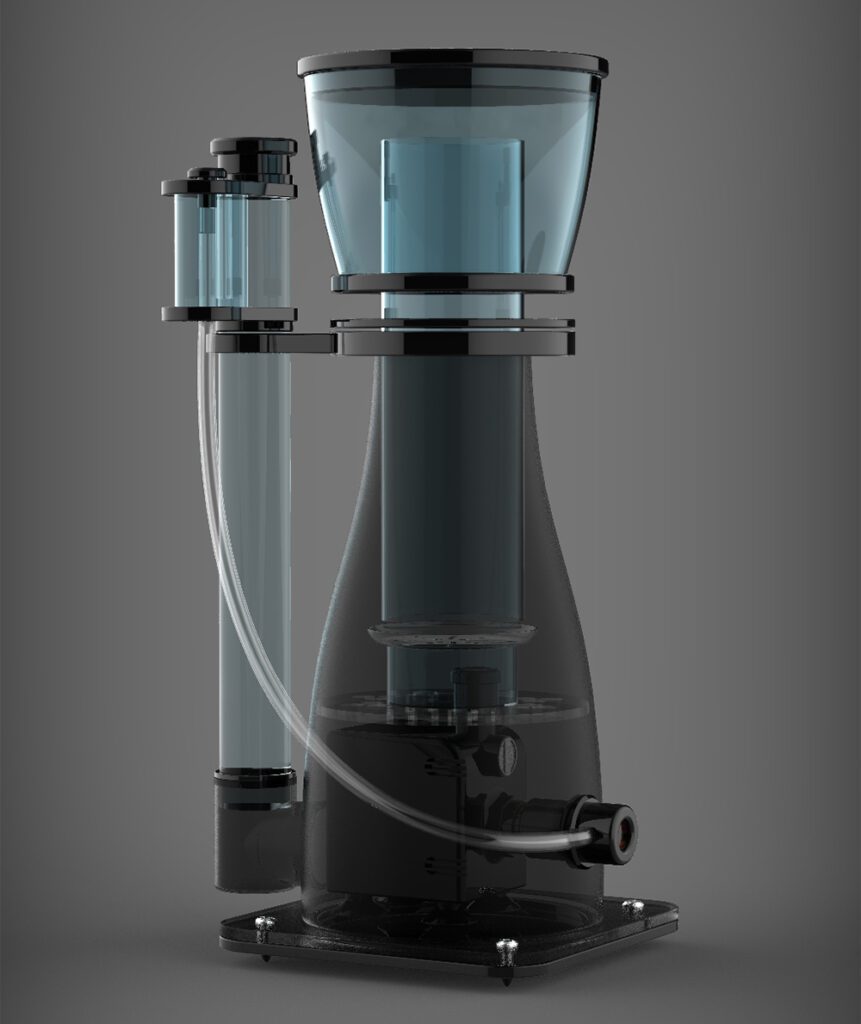
Circulation pumps
The power and number of circulation pumps depend on the size of the aquarium. Circulation should be good enough to prevent the formation of dead zones with stagnant water in the tank. It is important to create a circulation system that will blow the dirt out of the aquarium to the sump, where mechanical filtration and skimming occur.
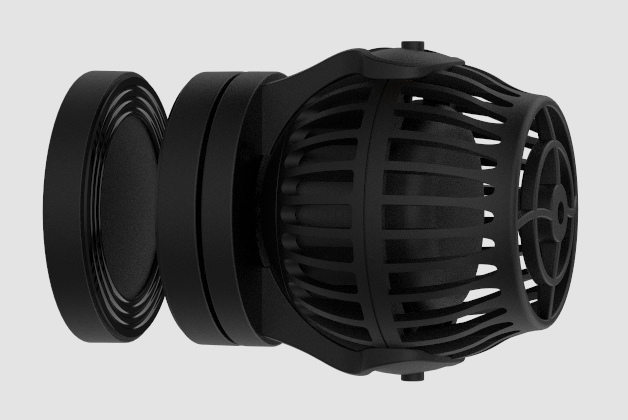
Setting up a marine aquarium and rock
Base for corals. It acts as a natural filtration system in a marine aquarium. According to the experience of aquarists and the adopted principle – the rock in the tank should constitute about 10% of the volume of the aquarium. You can choose from live rock, dry, natural rock, and synthetic rock. You can read more about the differences in rocks here.
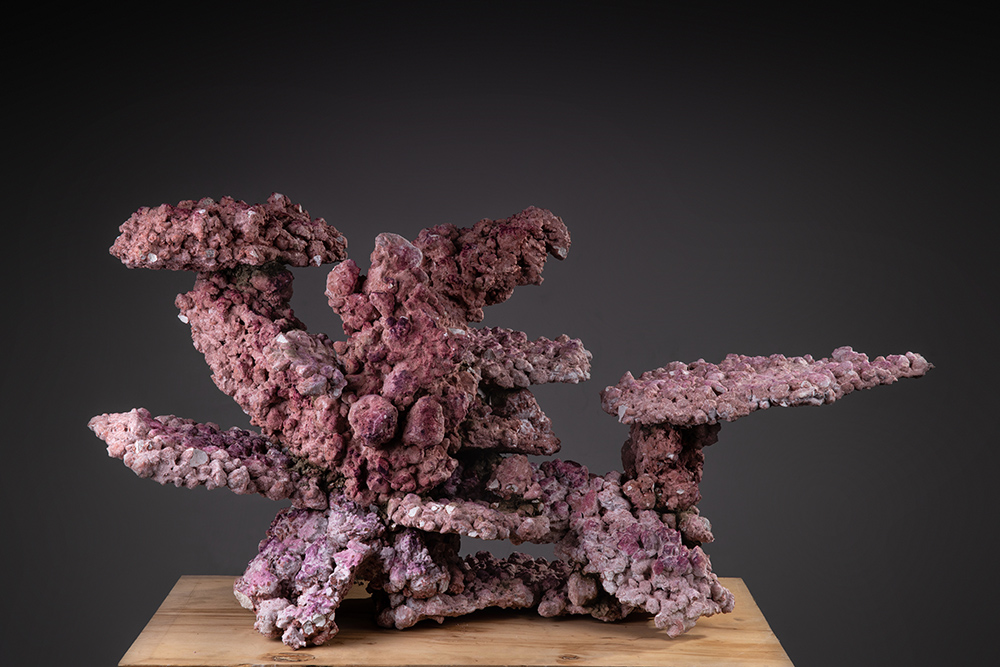
Glue
Once we have chosen and positioned the rock properly, it’s time to glue it together. For this purpose, we use dedicated adhesives. Personally, I recommend using cement glue, which will not only glue the rock together, but also allow calcareous algae to quickly grow on it, so that it forms a whole with the rock. When using cement glue, make sure that when mixing it in smaller batches, it does not dry before you use it.
Water to fill the tank
After we mount everything and glue the plumbing, we will want to fill up the aquarium with water. For this purpose, we can use “living water” from an already working tank or mix RO water with aquarium salt.
Heater and setting up a marine aquarium
To maintain a constant temperature in a marine aquarium, we need a heating system. The easiest way is to use a heater with a thermostat.
Thermometer
Thermometers are rarely used nowadays. You can use electronic thermometers or invest in an automatic device that simultaneously maintains and monitors the temperature.
Reverse osmosis filter
In short, an RO filter that will be used to filter tap water. Tap water must be cleaned of all impurities and minerals. We will use the purified water to replenish the evaporated water in the aquarium. It will also serve as a base for preparing brines from aquarium salts.
A typical RO filter consists of pre-filters, a membrane and a resin filter.
TDS meter
The TDS meter is used to monitor the contamination level of the water coming out of the reverse osmosis filter. We assume that the satisfactory level of impurities in RO water is 000 TDS.
A more advanced version of the TDS meter is an automatic monitor that can be plugged into a reverse osmosis system to constantly monitor the level of impurities.
Refractometer or salinity meter
A whole spectrum of handheld refractometers are available on the market. We can also consider electronic meters and salinity monitors.
Why do we need such a device? The refractometer will be useful for checking the brine, which we will prepare for water changes. A salinity monitor is good for tracking changes in salinity in your aquarium. But to get started, all you really need is a refractometer.
Setting up a marine aquarium – bacteria
After filling the aquarium up with water, starting all the equipment, including the return pump, we will want to add bacteria that will allow us to quickly start our aquarium.
There are a lot of bacteria on the market, it is worth choosing those that will quickly get you through the maturation process.
Automatic Top-Off (ATO) system and setting up a marine aquarium
It is a good idea to equip yourself with a refilling system for evaporated water. There are many solutions available that will help with this. It’s good to choose a system that will be trouble-free and easy to manage.
There are a lot of different sensors on the market that control the activation and deactivation of the top off. Personally, I recommend a system that has traditional, low-failure floats.
Power strips or built-in electrical system
To connect the devices, electricity must be supplied to the aquarium. Each device will require a separate socket, so we should summarize the number of devices that we’ll install and provide that many sockets. The simplest solution will be power strips.
Drop tests and setting up a marine aquarium
I strongly recommend supplying yourself with drop test kits. They’ll be used to monitor maturation in the aquarium.
At the very beginning, we will need a test for NO3 and PO4. Tests should be performed at least once a week and the results recorded. I recommend using a mobile application to save test results. By writing them down on paper, we risk flooding the notes or the results may simply get lost somewhere.
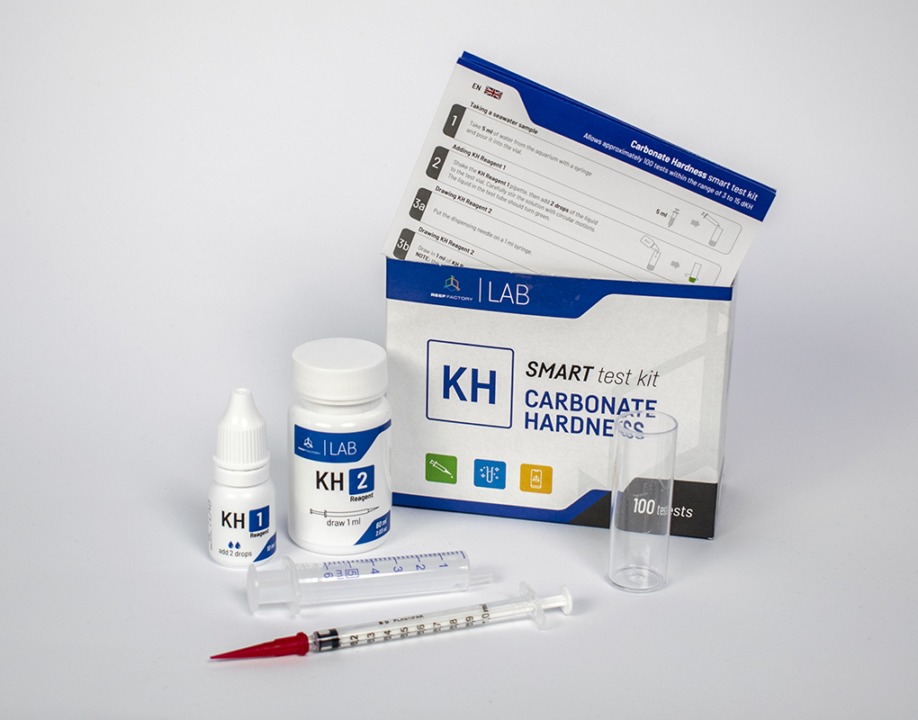
Summary
Setting up a marine aquarium requires familiarization with the basic elements we discussed in this article. Additionally, you can delve deeper into setting up a marine aquarium by referring to other articles on ReefPedia, which I recommend if you want to expand your knowledge.
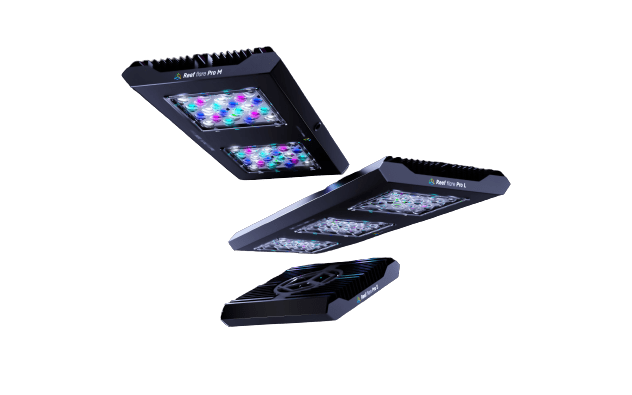
About the author
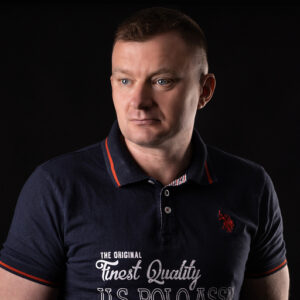
Marek Protasewicz
Reefkeeping has been my passion for over 10 years now. I love learning. The hobby has taught me many valuable lessons, patience being the best example. Combining work and passion is my path. I run Crazy Coral, a marine aquarium shop, for a number of years. Building this business from the scratch I learnt from my own mistakes at a heavy cost.
Later I managed a project aimed at development of methods for quick growth of Corals in non-natural conditions. The project was carried out by Get Sales, Poland. Presently, I am responsible for distribution strategy at Reef Factory, of which I am a co-founder. The company produces smart devices for marine aquaristics. The last projects I have been involved in are Social Reef and ReefPedia.



